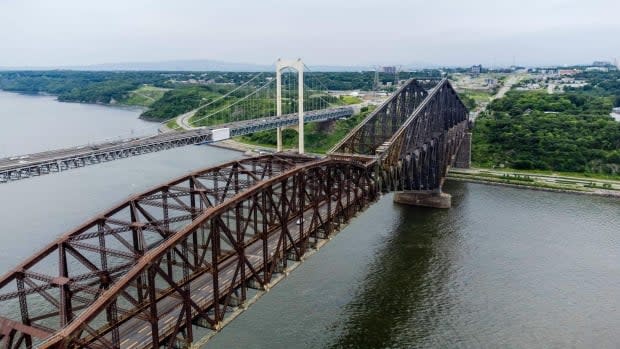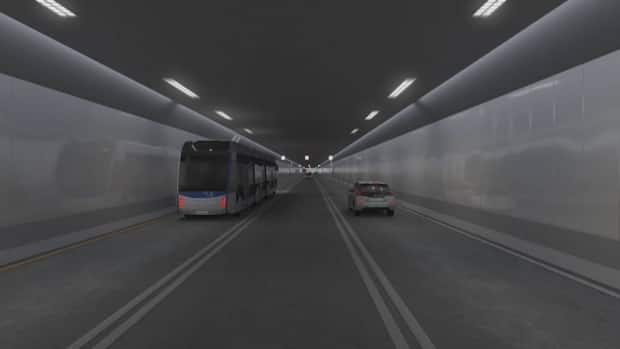Quebec City's 3rd link may not be warranted, projections suggests

Recent demographic projections from Quebec's Statistics Institute suggest that the Legault government's proposed third link project — two underwater tunnels that would connect Québec City and Lévis across the St. Lawrence — may not be warranted.
Throughout the election campaign, François Legault, the Coalition Avenir Québec leader, has maintained the project is necessary to reduce traffic congestion and to keep up with population growth in the area.
He has also refused to make public feasibility studies, saying the information is outdated and inaccurate.
But data obtained by Radio-Canada shows that the number of Lévis residents age 20 to 64 is projected to decrease by about 600 people by the time the tunnels are built in 10 years. That segment of the population is the most active in the workforce and the most likely to commute.
In comparison, the number of Lévis residents aged 65 and over is expected to go up by about 14,700 people during that same timeframe and by nearly 20,200 people in 20 years.
"Those 65 and older aren't commuting during rush hour," said Fanny Tremblay-Racicot, a professor in transportation and urban planning at Quebec's school for public administration, the École nationale d'administration publique.
Longer-term projections do suggest an increase of about 1,700 working adults living in Lévis by 2041, but some experts say that still doesn't justify the need for a tunnel.
"We know that the trips are made from the south shore toward the north shore," she said. "The number of additional citizens who will need to make this trip will be marginal."

About 36 per cent of Lévis residents work in Quebec City, compared to only three per cent the other way around. That's why the third link project is often considered to be more critical for those living on the south shore.
The overall population in Quebec City is expected to go up by about 81,400 people by 2041 but most of that growth will be among people 65 and over.
Earlier data from 2019 also projected minimal growth among working adults in the area.
Frédéric Fleury-Payeur, a statistician at Quebec's Statistics Institute, said demographic projections are usually quite reliable.
But current tendencies can change, Fleury-Payeur warned. For example, who makes up the active workforce could be different in 20 years.
"If older people are working, it could generate more workers," he said.
A chicken-and-egg situation

It's also a bit of a chicken-and-egg situation, Tremblay-Racicot explained. A third link would affect people's decisions on where to live.
"If you improve the travelling conditions between Quebec City and Lévis, more people will settle on the south shore," she said.
But the road conditions would eventually deteriorate because more people would be driving, she said. She said what the area needs is better public transportation.
The Legault government's latest proposal for the third link, which was unveiled last April, plans for two reserved bus lanes during rush hours.
The CBC reached out for comment to the CAQ candidate in Lévis but did not hear back in time for publication.


